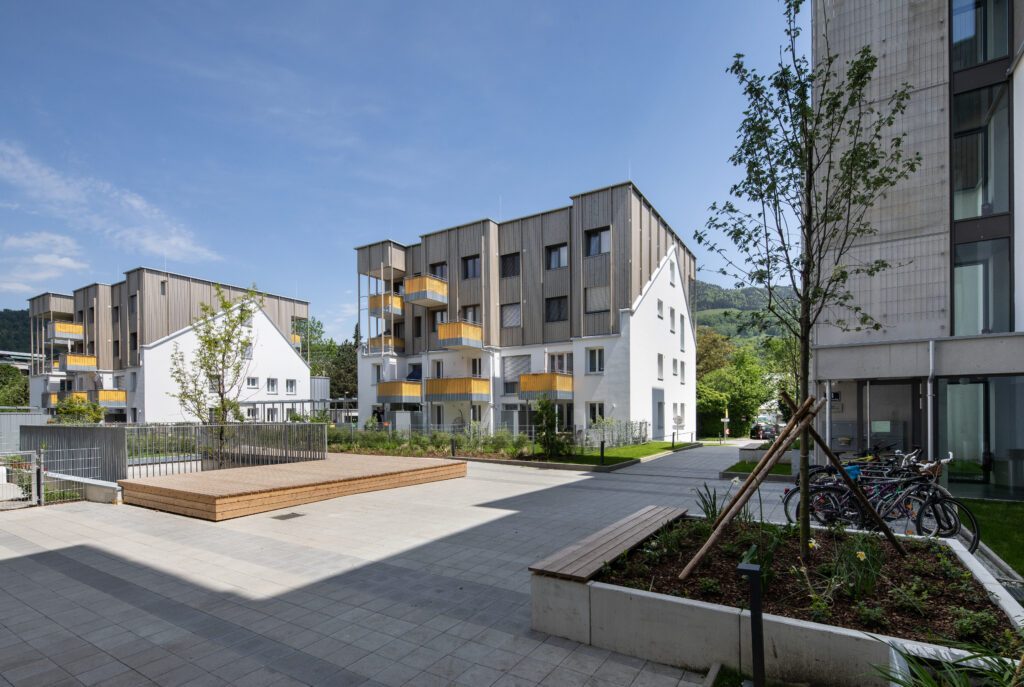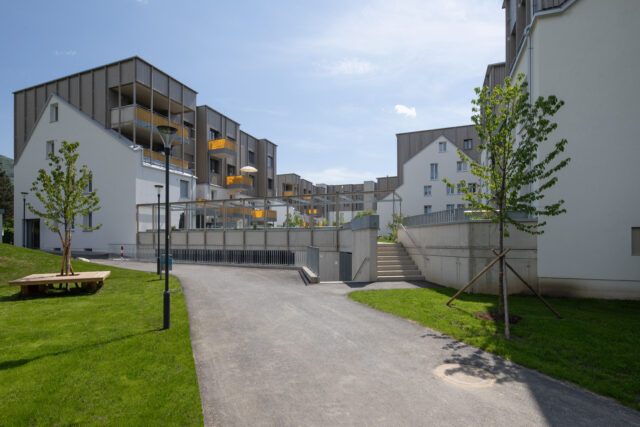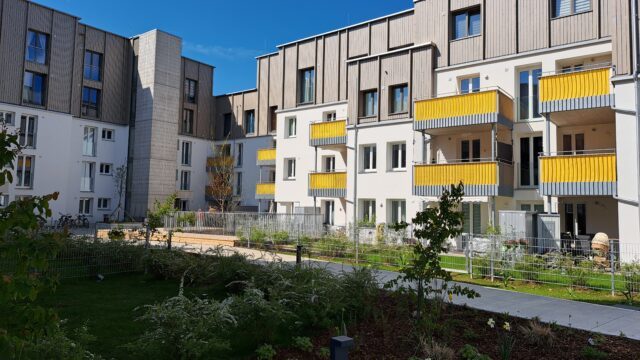Wir InHAUSer: Affordable living thanks to refurbishment
How a typical residential complex from the 1980s was not demolished but turned into a European beacon for climate-friendly and affordable housing.
A housing estate from the 1980s in the city of Salzburg was about to be demolished. Broken roofs and balconies, mold in the apartments, a completely outdated gas heating system and high energy losses plagued the residents of the 75 rental apartments. The city of Salzburg and the non-profit housing developer Heimat Österreich decided to take on the challenge together with a team of experts. The aim: to develop a modern residential complex that offers affordable living space but also meets the Paris climate protection targets. The SIR coordinated, accompanied and moderated this process for over ten years.
Use existing stock
Instead of demolishing the houses, a modernization concept was developed, the existing buildings were adapted to current requirements and 24 additional apartments were created by adding storeys. The main challenges were to find alternative accommodation for the 150 residents for the duration of the construction phase and to develop a refurbishment concept that both meets climate protection requirements and makes affordable housing possible in the future.
To this end, all measures in the areas of gray energy (building materials, materials, superstructures, etc.), operating energy (electricity, heating, hot water) and everyday mobility were weighed up in terms of costs and ecological benefits. On the basis of this consideration of many individual pieces of the puzzle, a large whole was ultimately created that harmonizes contemporary living at reasonable rental conditions and climate protection.
The innovative core elements of the project are the long-term cooperative project development and planning process, the implementation of a redensification of existing buildings in timber construction with ecological cellulose insulation and a new type of wastewater heat recovery system that has been implemented on this scale for the first time in Europe. All heat is recycled and reused. In addition, an alternative mobility concept is an important component of an urban mobility turnaround.
Climate-friendly solutions
Thanks to the efficient building envelope and the sustainable energy concept, in which a previously fossil-based system was replaced with a 100% renewable solution, tenants also save on energy costs. From the outset, the energy planning focused on recovering unavoidable, usage-dependent energy losses: exhaust air and waste water.
The physical quality of residential buildings is improving, which means that heat losses through the façade, windows and thermal bridges are decreasing. Water heating, on the other hand, requires energy, regardless of the structural conditions. The aim of this construction project was to close this last major gap. Domestic wastewater contains enormous energy potential all year round, which is disposed of completely unused into the public sewer system in residential buildings. Used room air also still has thermal potential that can be utilized.
This system creates a local cycle that keeps the energy generated within the estate for as long as possible and releases as little high-quality heat as possible into the environment.
However, social support was crucial for the implementation of the many technical innovations. It took very good arguments and appropriate support to ensure that the residents were prepared to allow the interventions in their private, individual and familiar living space.
Award-winning project
The success of the “Wir InHAUSer” project is reflected not only in the many awards – including the State Prize for Architecture and Sustainability – but also in the satisfaction of the residents. After a project phase lasting several years, the residential complex has been fully operational again since 2022 and has already been extensively tested. Based on satisfaction surveys and monitoring data, we can now say that the concept works: The concept works! 71 percent of residents feel very much at home in their new apartments, with 27 percent even stating that they had never lived in such a nice place before. Affordable living space was also created for an additional 50 people. Thanks to the Austrian system of non-profit housing and housing subsidies, rents in this project are half the average offers on the open market.
Rosemarie Fuchshofer has accompanied the project for many years and describes the situation as follows: Thousands of hours of work went into the project from the idea to its completed realization. Many clever minds have worked on it, many hard-working hands have implemented the ideas. As the project’s many awards show, a model pupil was sent on its way.
Photos: Christof Reich


